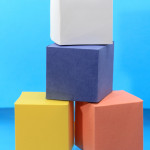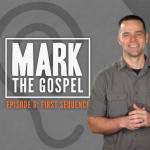I struggle with prayer.
Our Father who is in heaven
When you Pray “Say”
If you read the KJV you’re reading things the Biblical authors DID NOT WRITE. It’s not that it’s translators were in some secret conspiracy to deceive the masses. They weren’t. They were working with the best copies they had at the time. But these copies had errors – errors which entered the text over 1400 years of hand copying hand copies.
The vast majority of these errors were small and unintentional. If you’ve ever tried copying a lengthy handwritten document you may have experienced some of the following.
- errors caused by sight.
- errors caused by hearing and transcription.
- errors caused by lapses in memory.
But some copyists intentionally changed the text – a fact that later copiers could not rectify because all they had was the copy in front of them. It’s similar to the errors created and passed on in the game of telephone. The famous 4th century Bible translator Jerome said,
“They write down not what they find but what they think is the meaning, and while they attempt to rectify the errors of others, they merely expose their own.”
These copyists made
- spelling and grammar changes
- harmonistic alterations
- factual corrections
- conflations
- and even support for certain doctrines
The later is clearly evident in 1 John 1:7 where the King James reads,
For there are three that bear record in heaven, the Father, the Word, and the Holy Ghost: and these three are one.
It’s great proof text for the trinity. The problem is that no church writer quoted it when the doctrine of the trinity was being hammered out in the 3rd and 4th century. The reason: no manuscript contained these words until the late middle ages. It’s an insertion and not at all what John wrote.
And it’s not the only one.
Give us this day our daily bread
The King James Version may sound poetic but it’s not easily understood by the vast majority of modern English speakers. And it’s not just because of the thees and thous. You may have heard some of these words. But can you tell me what they mean?
abjects, afore, agone, amerce, artificer, bethink, bewray, botch, bray, by and by, caul, chargeable, concupiscenece, coping, cotes, cumbered, dissimulation, doleful, durst, emerods, fan, felloe, firkin, froward, gainsay, grisled, holden, holpen, ignominy, lade, lees, lucre, minish, mote, paps, paradventure, platted, quick, remission, requite, shambles, sheepcote, slow bellies, superfluous, thitherward, twain, unction, wimples, wont
OK, I’m sure you could get close to their meaning if you read them in context. But are you sure its the right meaning and not just your faulty guess?
You can learn a lot about the English language from reading the King James Version. But is that the point of reading the Bible? To broaden our vocabulary? I don’t think so.
The dedication to the King James version is the same love Catholics have for language of Latin. It’s traditional. It’s what we’ve always done. But stop and ask yourself does it still work? Is it helpful? Or are the people in the pews just hearing someone speak in tongues (1 Corinthians 14:19).
There are better versions available!
It’s perfectly acceptable to read the King James Version IF nothing better is available. I’ve often read it when it was the only Bible I could find. But that’s not often the case today! There are two other translations, the NASB and the ESV which are based upon more accurate manuscripts and that use the King James Word-For-Word method of translation. While the New KJV attempts to modernize some of the KJV’s language it still does not address the underlying manuscript issues.
What do you think?



















